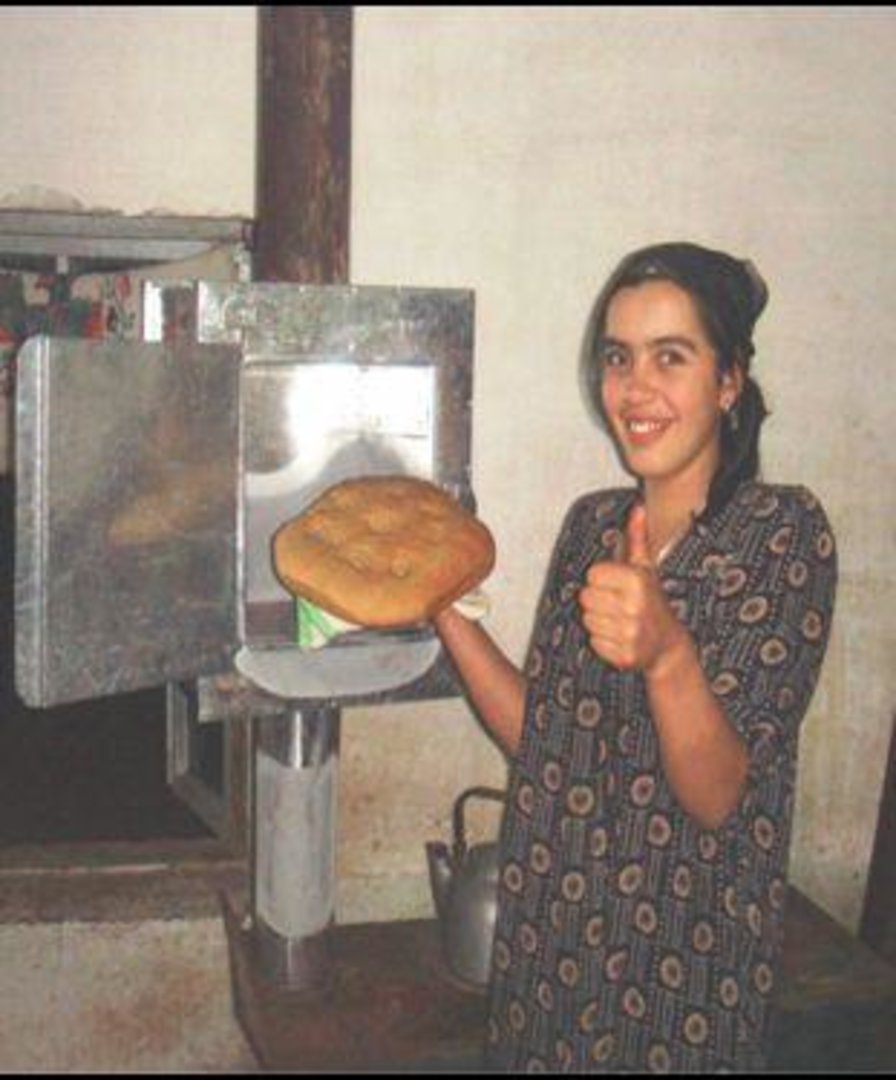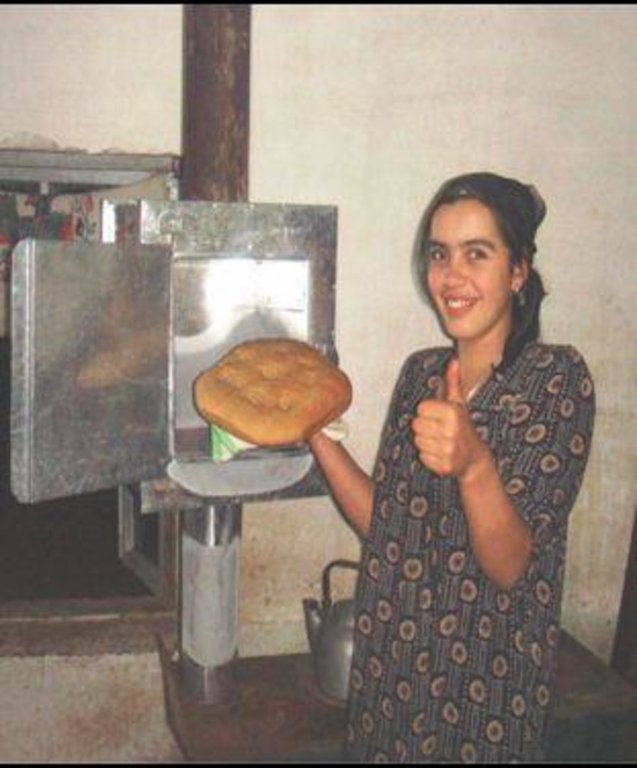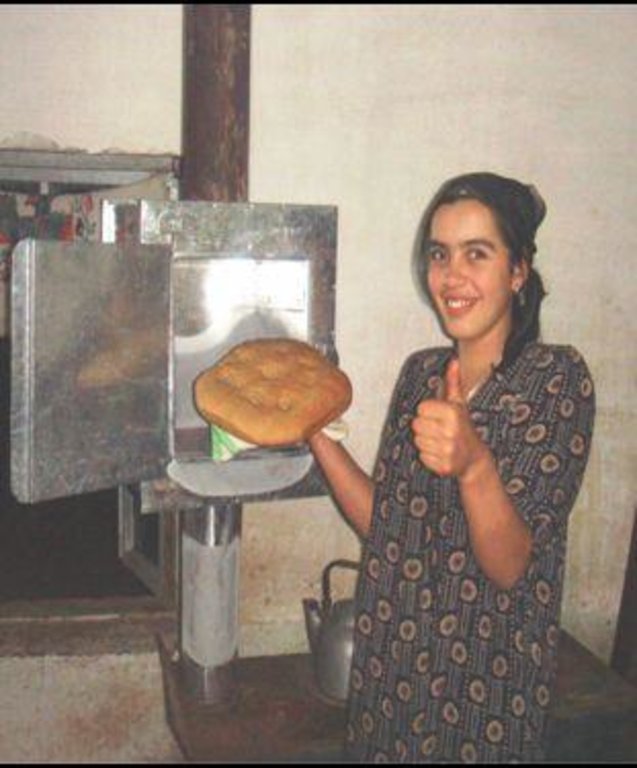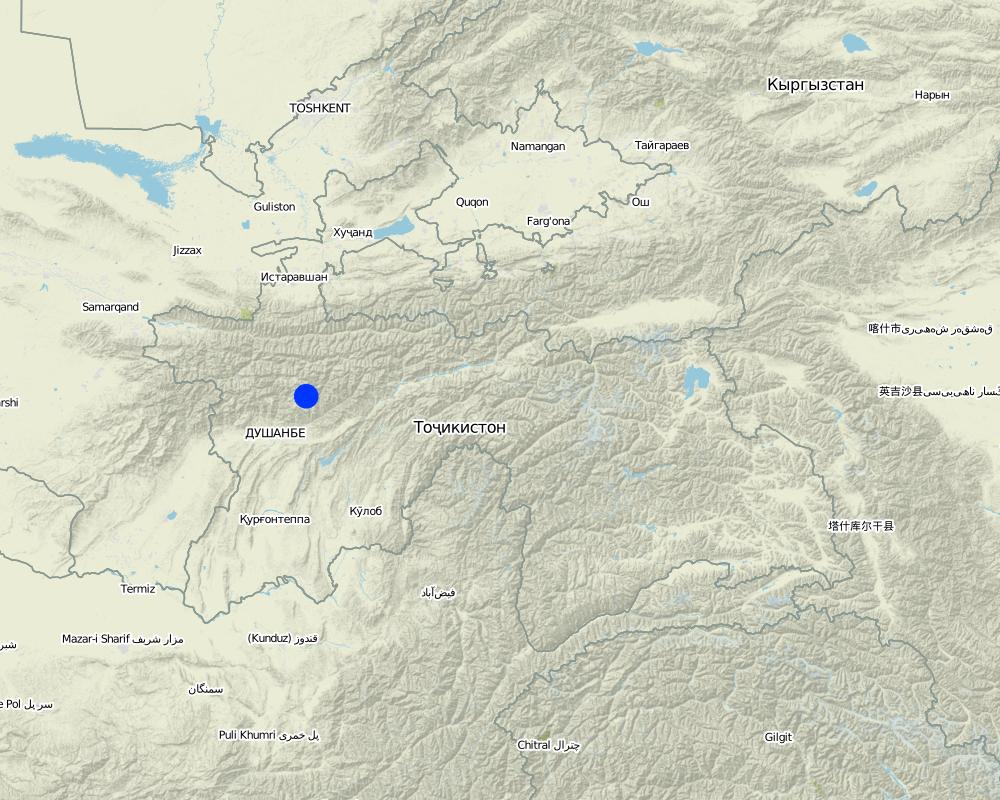Energy efficiency measures to increase the application of organic fertilisers. [Тажикистан]
- Шинийг нээх:
- Шинэчлэх:
- Эмхэтгэгч: Daler Domullojonov
- Хянан тохиолдуулагч: –
- Хянагчид: Fabian Ottiger, Alexandra Gavilano, Laura Ebneter
Бехтар намудани хосилнокии замин ба воситаи амалигардонии чорахои самаранокии истифодабарии неру
technologies_1050 - Тажикистан
- Бүрэн хураангуйн PDF хувилбар
- Бүрэн хураангуйг PDF-ээр хэвлэх
- Хөтөч дэх бүрэн хураангуй
- Бүрэн хураангуй (форматгүй)
- Energy efficiency measures to increase the application of organic fertilisers.: 02 11-р сар 2021 (public)
- Energy efficiency measures to increase the application of organic fertilisers.: 14 8-р сар 2019 (inactive)
- Energy efficiency measures to increase the application of organic fertilisers.: 21 7-р сар 2017 (inactive)
- Energy efficiency measures to increase the application of organic fertilisers.: 02 6-р сар 2017 (inactive)
- Energy efficiency measures to increase the application of organic fertilisers.: 31 5-р сар 2017 (inactive)
- Energy efficiency measures to increase the application of organic fertilisers.: 27 12-р сар 2016 (inactive)
Бүлгүүдийг үзэх
Бүгдийг дэлгэх Бүгдийг хаах1. Ерөнхий мэдээлэл
1.2 Технологийг үнэлэх, баримтжуулах ажилд хамаарах мэдээлэл өгсөн хүмүүс, байгууллагуудын холбоо барих мэдээлэл
Мэдээлэл өгсөн хүн (с)
ГТМ мэргэжилтэн:
Hafizova Tahmina
Welthungerhilfe
Герман
ГТМ мэргэжилтэн:
Olimov Nazarmad
Welthungerhilfe
Герман
Технологи баримтжуулах/үнэлэх ажилд дэмжлэг үзүүлсэн байгууллага(ууд)-ын нэр (шаардлагатай бол)
Deutsche Welthungerhilfe e. V. (Welthungerhilfe) - Тажикистан1.3 ВОКАТ-аар баримтжуулсан өгөгдлийг ашиглахтай холбоотой нөхцөл
Мэдээллийг хэзээ (газар дээр нь) цуглуулсан бэ?
30/04/2011
Эмхэтгэгч болон гол мэдээлэгч хүн(хүмүүс) WOCAT аргачлалаар баримтжуулсан мэдээллийг ашиглахтай холбоотой нөхцлийг хүлээн зөвшөөрсөн:
Тийм
2. ГТМ Технологийн тодорхойлолт
2.1 Технологийн товч тодорхойлолт
Технологийн тодорхойлолт:
The implementation of several low cost energy efficiency measures to reduce the amount of organic material used as fuel within rural households.
2.2 Технологийн дэлгэрэнгүй тодорхойлолт
Тодорхойлолт:
In many cases local inhabitants of rural areas depend heavily on locally available natural resources, contributing to, and accelerating deforestation. As a low cost fuel source, local households often use cow-dung and wood. Taking these from the local area contributes to decreased soil fertility and erosion processes. Most of the dung collected from livestock is burnt in a very inefficient manner for cooking, baking and heating purposes. Based upon assessments by Welthungerhilfe in 600 households (HH) who were using cow dung as the only fuel material, on average one HH uses 4.6 tons of cow dung annually when using traditional cooking stoves, 6 tons for heating and 4.5 tons for bread baking. This means almost 15.1 tons of cow dung is burnt annually per HH.
Using a simple modification of the traditional cooking stove, approximately 50 - 60% or 2.3 tons of fuel material can be saved. This saving can be further increased by the utilisation of a pressure cooker that decreases the cooking time by 50%. Not all local hot meals can be cooked with a pressure cooker but it can contribute to an additional saving of 0.7 ton of organic matter.
The introduction of a metal heat exchanger on the exhaust pipe of a cast iron stove can help save a household 3 tons of fuel material per year, the effectiveness can be further increased by the incorporation of bread baking compartment.
Further savings can be made by using straw, mud and wood to improve the thermal insulation of the exterior walls, ceiling and floor in the house.
Through the integration of all above measures approx 60% of the current usage rates of organic material used for fuel can be saved. In addition it will keep the house warmer for longer, reduce the smoke in the air, and help retain organic material in the soil.
Purpose of the Technology: The main objective of the energy efficiency technology is to address one of the root causes of the deforestation process and to improve soil fertility i.e. to decrease the demand from the local population for organic fuel. This project used a range of technologies to address this issue which in combination provided substantial savings in organic fuel.
Establishment / maintenance activities and inputs: Cooking stoves: For centuries local populations have been using traditional cooking stoves for cooking, especially during the warm seasons of the year. These were made from a mixture of mud and straw. The modification of these involves improving the aeration process during the burning of the fuel. This is achieved by putting a metallic cover with one inflow cutting and six small smoke outflow holes surrounding the cooking pot. The only input needed which is not locally available is the metallic cover.
Pressure cookers: As maintenance is required 1-2 times per season to keep the cooking stove functioning efficiently, the utilisation of pressure cookers can be easily integrated with the modified cooking stoves.
Heat exchangers: The heat exchangers installed on top of the iron ovens, can be produced by local tradesmen and need to be cleaned every 1-2 months. They have to be installed before the start of the winter season when the heating is needed.
House installation: The house insulation, using locally available materials does not need maintenance once it is installed. However, the storage of dry fruits or bread in the attic should be avoided as it could attract mice which can destroy the insulation.
Welhungerhilfe provided subsidies for all the above work, except for the heat exchangers.
Natural / human environment: The geographical area served by the project is mainly hill slopes, covered in low grade pasture fodder with wheat crops planted in loess soil. Although the soils have the potential to be very fertile, they are overused and not well managed and thus have become degraded and denuded. One of the main contributing factors to this is the removal of organic material from the biomass cycle. Trees, bushes and organic material is cut and collected to be used as fuel.
The main source of income in the area is from semi-subsistence farming, and the removal of organic material has a significant impact on their crops and livestock.
The houses are made from concrete foundations and mud bricks, these and the current stoves are all energy inefficient and fail to retain heat.
2.3 Технологийн гэрэл зураг
2.5 Энэ үнэлгээнд хамрагдсан технологийг хэрэгжүүлсэн улс орон/ бүс нутаг/ байршил
Улс:
Тажикистан
Улс/аймаг/сум:
Tajikistan / Khatlon
Байршлын дэлгэрэнгүй тодорхойлолт:
Temurmalik . Davad
Map
×2.6 Хэрэгжсэн хугацаа
Байгуулсан тодорхой оныг мэдэхгүй бол баримжаа хугацааг тодорхойл:
- <10 жилийн өмнө (саяхны)
2.7 Технологийн танилцуулга
Технологийг хэрхэн нэвтрүүлснийг тодорхойл:
- Гадны төсөл/хөтөлбөрийн дэмжлэгтэйгээр
Тайлбар (төслийн төрөл г.м.):
Promotion of energy efficiency measures began in 2007 by Welthungerhilfe projects
3. ГТМ технологийн ангилал
3.2 Технологи нэвтрүүлсэн газрын одоогийн газар ашиглалтын хэлбэр(үүд)

Суурьшил, дэд бүтэц
Тайлбар:
Major land use problems (compiler’s opinion): The land in rural Tajikistan is becomming denuded due to the pressure for organic fertilisers used as a source of fuel for heating and cooking. This impacts on soil quailty, yields and soil stability. This issue is compounded by the relatively high price of mineral fertilisers.
Major land use problems (land users’ perception): Crop yields decrease.
3.3 Газар ашиглалтын тухай нэмэлт мэдээлэл
Жилд ургамал ургах улирлын тоо:
- 1
Тодорхойлно уу:
Longest growing period in days: 220Longest growing period from month to month: march - october
3.5 Технологийн хамрах талбай
Технологи өргөн дэлгэрсэн эсхийг тодорхойл:
- газар дээр жигд тархсан
Технологи газар нутгийн хэмжээнд жигд тархсан бол түүний эзлэх талбайг дундажаар тооцож тэмдэглэ:
- > 10,000 км2
Тайлбар:
Several energy efficiency measures were implemented by households in three neighbouring districts; Baljuvon, Temurmalik and Khovaling. These included the following: cooking stoves were modified in 1,924 HHs (households), pressure cookers were used in 132 HHS, heat exchangers were used in 569 HHs, improved house insulation in 850 HHs, and group bread baking - 10 groups (average of 10 families in each group).
3.6 Технологийг бүрдүүлэх ГТМ арга хэмжээ

Агрономийн арга хэмжээ
- А2: Органик нэгдэл/ хөрсний үржил шим

Барилга байгууламжийн арга хэмжээ
- S11: Бусад
Тайлбар:
Main measures: structural measures
3.7 Технологид харгалзах газрын доройтлын төрөл

хөрсний химийн доройтол
- Cn: Үржил шим ба ялзмаг буурах (элэгдлийн шалтгаангүй)

хөрсний физик доройтол
- Pc: Хөрс дагтарших
Тайлбар:
Main type of degradation addressed: Cn: fertility decline and reduced organic matter content
Secondary types of degradation addressed: Pc: compaction
Main causes of degradation: soil management (poor ploughing practices), deforestation / removal of natural vegetation (incl. forest fires) (deforestation), over-exploitation of vegetation for domestic use (removal of trees and bushes for fuel pruposes.), overgrazing (imbalance of carrying capacity and size of livestock herds.), disturbance of water cycle (infiltration / runoff) (reduced infiltration capacity.), poverty / wealth (local population have restricted funds)
Secondary causes of degradation: crop management (annual, perennial, tree/shrub) (monoculture), change of seasonal rainfall (more intensive heavy rainfall events), droughts (events occuring more frequently), population pressure (population is increasing), labour availability (external labour migration)
3.8 Газрын доройтлоос урьдчилан сэргийлэх, сааруулах ба нөхөн сэргээх
Газрын доройтолтой холбоотойгоор Технологи ямар зорилго тавьсан болохыг тодорхойл:
- газрын доройтлоос урьдчилан сэргийлэх
- Газрын доройтлыг бууруулах
Тайлбар:
Main goals: prevention of land degradation
Secondary goals: mitigation / reduction of land degradation
4. Техникийн нөхцөл, хэрэгжүүлсэн үйл ажиллагаа, материал ба зардал
4.1 Технологийн техник зураг
Зохиогч:
Daler Domullojonov, 14, Giprozem street, app. 27, Dushanbe, Tajikistan
4.2 Техникийн үзүүлэлт/ техникийн зургийн тайлбар
Heat exchanger adopted by Welthungerhilfe, promoted in communities of the Khatlon region of Tajikistan.
Location: Temurmalik, Baljuvon and Khovaling districts. Khatlon region / Tajikistan
Date: September, 2009
Technical knowledge required for field staff / advisors: high (promotion of EE measures)
Technical knowledge required for land users: moderate (cooking stove modification and use of pressure cookers, mainly by females)
Technical knowledge required for Local masters: high (for construction of heat exchangers and improving house thermal insulation)
Main technical functions: increase in organic matter
Secondary technical functions: improvement of topsoil structure (compaction), increase of infiltration, increase of biomass (quantity)
Structural measure: cook stove
Structural measure: House insulation
Structural measure: Presure cooker
Structural measure: Heat exchanger
4.3 Материал болон зардалд хамаарах ерөнхий мэдээлэл
бусад/үндэсний мөнгөн нэгж (тодорхойл):
TJS
Ам.доллар ба үндэсний мөнгөн нэгж хоорондын хөрвөх үнийг тодорхойл (шаардлагатай бол): 1 USD =:
4.5
Хөлсний ажилчны нэг өдрийн цалингийн хэмжээг тодорхойлно уу:
11.00
4.4 Бий болгох үйл ажиллагаа
| Үйл ажиллагаа | Арга хэмжээний төрөл | Хугацаа | |
|---|---|---|---|
| 1. | Cook stove modification | Барилга байгууламжийн | any |
| 2. | Pressure cooker | Барилга байгууламжийн | any |
| 3. | House insulation | Барилга байгууламжийн | once in the beginning |
| 4. | heat exchanger | Барилга байгууламжийн | once in the beginning |
4.5 Бий болгоход шаардагдсан зардал, хөрөнгийн өртөг
| Зардлын нэр, төрөл | Хэмжих нэгж | Тоо хэмжээ | Нэгжийн үнэ | Зардал бүрийн нийт өртөг | Нийт дүнгээс газар ашиглагчийн төлсөн % | |
|---|---|---|---|---|---|---|
| Хөдөлмөр эрхлэлт | Labour | per stove | 1.0 | 5.5 | 5.5 | 100.0 |
| Хөдөлмөр эрхлэлт | Labour | per room | 1.0 | 37.8 | 37.8 | 100.0 |
| таримал материал | Wheat straw | bales | 12.0 | 4.9 | 58.8 | 100.0 |
| Барилгын материал | Metallic cover | per stove | 1.0 | 5.1 | 5.1 | 34.0 |
| Барилгын материал | Earth | per stove | 1.0 | 0.5 | 0.5 | 100.0 |
| Барилгын материал | Wooden lath | per room | 1.0 | 72.0 | 72.0 | 15.0 |
| Барилгын материал | Nail, lime, brush, emalen | per room | 1.0 | 30.75 | 30.75 | 100.0 |
| Барилгын материал | Veneer and glueing silicone | per room | 1.0 | 43.8 | 43.8 | 100.0 |
| Бусад | Pressure cooker | piece | 1.0 | 22.2 | 22.2 | 80.0 |
| Бусад | heat exchanger | per stove | 1.0 | 30.0 | 30.0 | 100.0 |
| Бусад | Transportation cost | 1.0 | 44.0 | 44.0 | 100.0 | |
| Технологи бий болгох нийт үнэ өртөг | 350.45 | |||||
Тайлбар:
Duration of establishment phase: 12 month(s)
4.6 Арчилгаа/ урсгал үйл ажиллагаа
| Үйл ажиллагаа | Арга хэмжээний төрөл | Хугацаа/ давтамж | |
|---|---|---|---|
| 1. | adjustment of modified cook stove | Барилга байгууламжийн | twice per year |
| 2. | cleaning of heat exchanger | Барилга байгууламжийн | twice per year |
4.7 Арчилгаа/урсгал ажилд шаардагдсан зардал, хөрөнгийн өртөг (нэг жилд)
| Зардлын нэр, төрөл | Хэмжих нэгж | Тоо хэмжээ | Нэгжийн үнэ | Зардал бүрийн нийт өртөг | Нийт дүнгээс газар ашиглагчийн төлсөн % | |
|---|---|---|---|---|---|---|
| Хөдөлмөр эрхлэлт | Labour | per stove | 1.0 | 3.3 | 3.3 | 100.0 |
| Технологийн арчилгаа/урсгал үйл ажиллагаанд шаардагдах нийт үнэ өртөг | 3.3 | |||||
Тайлбар:
Machinery/ tools: brush
The costs are based upon 2010 prices.
4.8 Зардалд нөлөөлж байгаа хамгийн чухал хүчин зүйл
Өртөг, зардалд нөлөөлөх гол хүчин зүйл:
The price of the construction materials are dependent on many different external factors, and prices are generally increasing seasonally and annually.
5. Байгаль ба нийгмийн нөхцөл
5.1 Уур амьсгал
Жилийн нийлбэр хур тундас
- < 250 мм
- 251-500 мм
- 501-750 мм
- 751-1,000 мм
- 1,001-1,500 мм
- 1,501-2,000 мм
- 2,001-3,000 мм
- 3,001-4,000 мм
- > 4,000 мм
Агро-уур амьсгалын бүс
- хагас хуурай
Thermal climate class: temperate. 3 months below 5 degrees, 7 months above 10 degrees
5.2 Гадаргын хэлбэр
Дундаж налуу:
- хавтгай (0-2 %)
- бага зэрэг налуу (3-5 %)
- дунд зэрэг налуу (6-10 % )
- хэвгий (11-15 %)
- налуу (16-30 %)
- их налуу (31-60 % )
- эгц налуу (>60 %)
Гадаргын хэлбэр:
- тэгш өндөрлөг / тал
- нуруу
- уулын энгэр
- дов толгод
- бэл
- хөндий
Өндрийн бүслүүр:
- 0-100 д.т.д. м.
- 101-500 д.т.д. м.
- 501-1,000 д.т.д м.
- 1,001-1,500 д.т.д м.
- 1,501-2,000 д.т.д м.
- 2,001-2,500 д.т.д. м.
- 2,501-3,000 д.т.д. м.
- 3,001-4,000 д.т.д м.
- > 4,000 д.т.д. м.
5.3 Хөрс
Хөрсний дундаж зузаан:
- маш нимгэн (0-20 см)
- нимгэн (21-50 см)
- дунд зэрэг зузаан (51-80 см)
- зузаан (81-120 cм)
- маш зузаан (>120 cм)
Хөрсний бүтэц (өнгөн хөрс):
- дундаж (элсэнцэр, шавранцар)
Өнгөн хөрсөнд агуулагдах ялзмаг:
- дунд (1-3 % )
5.4 Усны хүртээмж ба чанар
Гүний усны түвшин:
> 50 м
Гадаргын усны хүртээмж:
дунд зэрэг
Усны чанар (цэвэршүүлээгүй):
ашиглах боломжгүй
5.5 Биологийн олон янз байдал
Биологийн олон янз байдлын талаархи тайлбар ба бусад тодорхойлолт:
Species diversity: medium, low
5.6 Технологи нэвтрүүлсэн газар ашиглагчдын тухай мэдээлэл
Бусад эх үүсвэрээс олох орлого:
- Нийт орлогын 10-50 %
Чинээлэг байдлын түвшин:
- нэн ядуу
- ядуу
Хувь хүн эсвэл бүлэг:
- Хувь хүн / өрх
Хүйс:
- эмэгтэй
- эрэгтэй
Газар ашиглагчдын бусад шинж чанарыг тодорхойл:
Land users applying the Technology are mainly common / average land users
Population density: 10-50 persons/km2
Annual population growth: 1% - 2%
90% of the land users are poor.
10% of the land users are poor.
Off-farm income specification: local inhabitants are in many cases dependent on remittances from Russia and other income generating activities.
5.7 Технологи нэвтрүүлсэн газар ашиглагчийн өмчилж буй, эзэмшиж буй, түрээсэлж буй эсвэл ашиглаж буй (ашиглах эрх) газрын талбай
- < 0.5 га
- 0.5-1 га
- 1-2 га
- 2-5 га
- 5-15 га
- 15-50 га
- 50-100 га
- 100-500 га
- 500-1,000 га
- 1,000-10,000 га
- > 10,000 га
Энэ талбай том, жижиг, дунд алинд хамаарах вэ (орон нутгийн нөхцөлд харгалзуулна уу)?
- бага-хэмжээний
5.8 Газар эзэмшил, газар ашиглах эрх, ус ашиглах эрх
Газар өмчлөл:
- төрийн
Тайлбар:
There are a variety of land user and water rights within the three districts, but they do not directly affect the implementation of the technologies.
5.9 Дэд бүтэц, үйлчилгээний хүртээмж
эрүүл мэнд:
- ядуу
- дунд зэргийн
- сайн
боловсрол:
- ядуу
- дунд зэргийн
- сайн
техник зөвлөгөө:
- ядуу
- дунд зэргийн
- сайн
хөдөлмөр эрхлэлт (жишээ нь, ХАА-аас өөр):
- ядуу
- дунд зэргийн
- сайн
зах зээл:
- ядуу
- дунд зэргийн
- сайн
эрчим хүчний хангамж:
- ядуу
- дунд зэргийн
- сайн
зам тээвэр:
- ядуу
- дунд зэргийн
- сайн
усан хангамж ба ариутгал:
- ядуу
- дунд зэргийн
- сайн
санхүүгийн үйлчилгээ:
- ядуу
- дунд зэргийн
- сайн
6. Үр нөлөө ба дүгнэлт
6.1 Технологийн талбайд үзүүлсэн нөлөө
Нийгэм-эдийн засгийн үр нөлөө
Үйлдвэрлэл
газар тариалангийн үйлдвэрлэл
ГТМ хэрэгжихээс өмнөх тоо хэмжээ:
12 t/ha
ГТМ хэрэгжиснээс хойшхи тоо хэмжээ:
21 t/ ha
бүтээмж буурах эрсдэл
Орлого, зарлага
ХАА-н зардал
тухайн аж ахуйн орлого
ГТМ хэрэгжихээс өмнөх тоо хэмжээ:
TJS 100
ГТМ хэрэгжиснээс хойшхи тоо хэмжээ:
TJS 1200
Нийгэм-соёлын үр нөлөө
хүнсний аюулгүй байдал/ өөрийн хэрэгцээг хангах
эрүүл мэндийн байдал
маргааныг шийдвэрлэх
Экологийн үр нөлөө
Хөрс
хөрс алдагдах
хөрс нягтрах
Биологийн олон янз байдал: ургамал, амьтан
газрын дээрхи / доорхи карбон
Экологийн бусад үр нөлөө
reduce fuel costs
warmer houses, health benefits
pressure cooker
Тайлбар/ тодорхой дурьдах:
Not possible to cook all meals in this
6.3 Технологийн уур амьсгалын өөрчлөлт, цаг агаарын гамшигт үзэгдэлд өртөх байдал ба эмзэг байдал (газар ашиглагчийн бодлоор)
Уур амьсгалын аажим өөрчлөлт
Уур амьсгалын аажим өөрчлөлт
| Улирал | Уур амьсгалын өөрчлөлт/экстрим үзэгдлийн төрөл | Технологи түүний нөлөөг хэрхэн бууруулж байна? | |
|---|---|---|---|
| жилийн дундаж температур | Өсөлт | сайн |
Уур амьсгалаас хамаарах аюул (гамшиг)
Цаг уурын гамшигт үзэгдэл
| Технологи түүний нөлөөг хэрхэн бууруулж байна? | |
|---|---|
| орон нутгийн аадар бороо | мэдэхгүй |
| орон нутгийн салхин шуурга | мэдэхгүй |
Уур амьсгалын гамшиг
| Технологи түүний нөлөөг хэрхэн бууруулж байна? | |
|---|---|
| ган гачиг | сайн |
Усзүйн гамшиг
| Технологи түүний нөлөөг хэрхэн бууруулж байна? | |
|---|---|
| усны үер (гол) | мэдэхгүй |
Уур амьсгалд хамаарах бусад үр дагавар
Уур амьсгалд хамаарах бусад үр дагавар
| Технологи түүний нөлөөг хэрхэн бууруулж байна? | |
|---|---|
| цргалтын хугацаа багасах | сайн |
Тайлбар:
The thermal could be modified to increase its thermal properties.
6.4 Өртөг ба ашгийн шинжилгээ
Бий болгох зардалтай харьцуулахад ямар ашиг өгсөн бэ (газар ашиглагчийн бодлоор)?
Богино хугацаанд эргэн төлөгдөх байдал:
эерэг
Урт хугацаанд эргэн төлөгдөх байдал:
маш эерэг
Арчилгаа/урсгал зардалтай харьцуулахад ямар ашиг өгсөн бэ (газар ашиглагчийн бодлоор)?
Богино хугацаанд эргэн төлөгдөх байдал:
маш эерэг
Урт хугацаанд эргэн төлөгдөх байдал:
маш эерэг
Тайлбар:
As it uses mainly locally available materials, it is a low cost approach which increases energy efficiency and improves resource use.
6.5 Технологи нэвтрүүлэлт
Тайлбар:
70% of land user families have adopted the Technology with external material support
1355 land user families have adopted the Technology with external material support
Comments on acceptance with external material support: The amount of the local's contribution to the project themselves was between 52.7% to 100%.
30% of land user families have adopted the Technology without any external material support
569 land user families have adopted the Technology without any external material support
Comments on spontaneous adoption: Fitting heat exchangers, adapting cooking stoves, and improving house thermal insulation are the main forms of technology that have been replicated in the above households.
There is a little trend towards spontaneous adoption of the Technology
Comments on adoption trend: This is restricted due to limited access to funds.
6.7 Технологийн давуу тал/боломжууд
| Газар ашиглагчдын тодорхойлсон давуу тал/боломжууд |
|---|
|
It is very affordable How can they be sustained / enhanced? By involving local relevant authorities and departments |
| It saves and minimises expenditures for electricity, gas, and firewood procurement |
| The rooms are warmer and I can cook bread inside and save more fuel. |
| Эмхэтгэгч, бусад мэдээлэл өгсөн хүмүүсийн өнцгөөс тодорхойлсон давуу тал/боломжууд |
|---|
|
It is a low cost measure using locally available materials. The heat exchanger can improve the heating capacity of the room threefold, for example. How can they be sustained / enhanced? replication rates could be increased through promotion to larger audiences with support of local authorities or by law. |
|
It is environmental friendly and increases the amount of organic material that stays within the soil. How can they be sustained / enhanced? There could be further awareness raising of the benefits of keeping organic materials in the soil. |
| It saves time for collecting fire material wood and cow dung. |
| It presents an opportunity to increase land productivity through application of organic fertilisers |
|
The technologies do not have a large initial financial cost and can be implemented progressively as funds become available. How can they be sustained / enhanced? Training of more local teachers to provide demonstrations to the community. |
6.8 Технологийн дутагдалтай/сул тал/аюул болон тэдгээрийг хэрхэн даван туулах арга зам
| Газар ашиглагч нарын тодорхойлсон сул тал/ дутагдал/ эрсдэл | Тэдгээрийг хэрхэн даван туулах вэ? |
|---|---|
| More labour needed to cut fuel into smaller pieces | Behavioural change |
| Эмхэтгэгч, бусад мэдээлэл өгсөн хүмүүсийн өнцгөөс тодорхойлсон сул тал/ дутагдал/ эрсдэл | Тэдгээрийг хэрхэн даван туулах вэ? |
|---|---|
| Not all meals can be cooked in a pressure cooker | |
| Heat exchangers can get very hot for cooking purposes |
7. Ном зүй ба холбоосууд
7.2 Ном, хэвлэлийн ишлэл
Гарчиг, зохиогч, он, ISBN:
Brochure "Soil improvement starts with efficient cook stoves! low cost options to increase energy efficiency in Southern Tajikistan"
Хаанаас авч болох вэ? Зардал?
Weltgungerhilfe projects in Khatlon region, Temurmalik district
Гарчиг, зохиогч, он, ISBN:
Welthungerhilfe project final narrative report (144-912)
Хаанаас авч болох вэ? Зардал?
Weltgungerhilfe projects in Khatlon region, Temurmalik district
Холбоос ба модулууд
Бүгдийг дэлгэх Бүгдийг хаахХолбоосууд
Холбоос байхгүй байна
Модулууд
Модуль байхгүй байна






